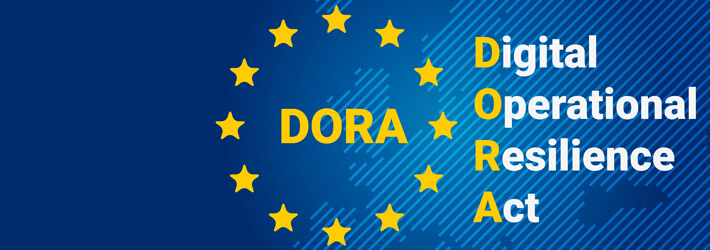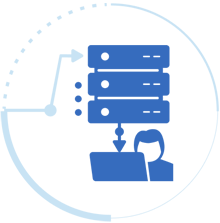Last Updated on March 4, 2025 by Akhilesh

An important step in the EU’s efforts to build a more robust and safe financial system is the Digital Operations Resilience Act (DORA), a comprehensive framework with all-encompassing regulatory characteristics to improve the operational resilience and cybersecurity of financial institutions.
Why is there a need for DORA?
Let’s go through some of the biggest reasons why the finance industry needed DORA compliance:
-
- Regulatory Gaps: Some rules primarily addressed financial stability but lacked thorough and uniform specifications for managing ICT and cybersecurity. Due to deficiencies in operational resilience and event reporting caused by inconsistent regulations, many institutions were not adequately prepared for significant distortions. Organizations will have a well-defined set of procedures and efficient ways to handle any security events when they comply with DORA.
- Digital Transformation: The digital transformation of financial institutions has been accelerated in recent years. Businesses and their clients gain a number of advantages from this. However, it also makes people more dependent on ICT systems. Consequently, operational disturbances like outages, data breaches, and cyberattacks have the potential to have a greater impact. To safeguard the stability and security of the financial system as well as the resilience of vital financial services, regulators have acknowledged the necessity of a single framework. DORA is such a framework.

- Trust and Stability: The increasing frequency of cyberattacks in the financial industry puts people and the larger economic system in danger. DORA is made for both finance companies and their supply networks for ICT. A high degree of digital resilience that is well-defined is what it is intended to achieve. A large number of DORA’s needs are probably covered by current frameworks. As a result, most organizations will need to fill up certain gaps. Non-compliance with DORA will expose organizations to penalties, legal action, and harm to their reputation. The banking sector may no longer trust suppliers to deliver services if they are not completely compliant.
- Competitive Advantage: For customers, security and trust are important. Banks, insurance companies, investment managers, and payment service providers are just a few of the financial institutions that can use DORA compliance to let their clients know how important these variables are to them. Businesses that adopt DORA thoroughly first have the opportunity to increase their market share. Businesses can use DORA compliance as a differentiator in the marketplace by demonstrating their dedication to security excellence and operational resilience.
- Enhanced Trust: Consumers seek reassurance over the security of their possessions and financial information. Customer trust in your ability to protect their information can be increased by adhering to DORA. Financial institutions that exhibit a dedication to operational resilience improve their standing and forge closer bonds with clients who place a higher value on security.
DORA Compliance – Tips and Best Practices
Consider implementing the following application security best practices to ensure dependable and efficient corporate operations:
1. Conducting Threat Hunts
Since cyber threats are always changing, a strict compliance strategy might not work. Thus, use a flexible, adaptive approach to change your resilience strategy regularly, making use of new threat intelligence and experiences from previous disasters. While critical exposures are undergoing remediation, it is crucial to protect them from attempts to exploit them. Preventing possible breaches and interruptions and enabling prompt response are two benefits of proactive threat detection. Insights from a danger hunt will also assist teams in promptly fixing issues and preparing reports to the appropriate authorities.
2. Incident Response and Recovery Plans
Robust incident response mechanisms are essential at a time when the impact of a cyber disaster can be determined by the timeliness of the reaction. Establishing procedures for documenting, reporting, and classifying incidents in compliance with DORA guidelines. It takes more than a checklist to create efficient reaction systems. Regularly testing disaster recovery and business continuity plans can also ensure a speedy operational recovery after a cyberattack. Financial institutions can comply with the strict requirements of the rule while reducing operational disruptions by utilizing automation systems for real-time event tracking.
3. Train Employees and Build Awareness
Security awareness training is one of the most important programs a company can provide since end users and workers are the most common entrance points for cyberattacks. Techniques like phishing and social engineering can easily take advantage of unprepared and ignorant users. Cybersecurity basics can have a big impact and possibly prevent assaults before they begin. Safe web browsing, using strong and secure passwords, using a VPN safely (avoid public Wi-Fi), and spotting questionable emails or files. Ensure that workers understand the basics of cybersecurity and how they contribute to system security. Keep a regular eye out for phishing and social engineering scams. One of the most important tactics is to promote a resilient culture where everyone is accountable for cybersecurity.
4. Data Monitoring and Auditing
Continuous monitoring, auditing, and the capacity to show progress during regulatory reviews are all necessary for compliance. It means incorporating compliance into day-to-day operations and setting up systems to monitor and report on important indicators in the context of financial institutions. Regular monitoring of activity logs and data access is necessary to determine who is accessing, altering, or exporting unstructured data. Any odd behavior or access patterns that can point to data leakage or illegal access should set off alarms. Documenting each stage of the compliance journey and keeping leadership updated guarantees that firms are not caught off guard during audits. DORA emphasizes that organizations must regularly evaluate and modify their ICT risk management frameworks, with a focus on continuous assessments to find and fix weaknesses. Even though DORA does not specifically require external audits, hiring certified external auditors is advantageous. With the intricacies of risk management and ICT resilience testing, external auditors offer a dispassionate viewpoint and specialized knowledge that may help guarantee comprehensive assessments and improve compliance initiatives.
5. Stay Updated and Informed
The process of complying with DORA is dynamic. Maintain compliance with any regulatory changes by routinely reviewing EU updates and modifying your framework as needed. Hackers could exploit outdated software vulnerabilities. To take advantage of the most recent security updates and improvements, ensure that all users are aware of the most recent Compliance. Also, ensure that the governance policies are in place to oversee the adherence to DORA regulations and to facilitate effective decision-making.
6. Prepare the Register of Information
For DORA compliance, creating the information register is another procedure. Procedures for recording and reporting ICT services that fall within the scope of each EU entity’s information register must be devised. Everybody must also make sure that the vast amounts of data needed for every service, contract, and provider can be gathered and efficiently entered into the necessary template.
7. Zero-Trust Policy
Zero Trust models require constant identity verification, which contributes to DORA compliance by ensuring that only authorized users have access. For exposures through third-party software, implement a “zero-trust” strategy. Zero Trust minimizes the attack vector by restricting access to the bare essentials. NDR complements this by monitoring network traffic and detecting unusual patterns that could indicate an attack. Continually check third-party software for vulnerabilities during execution and promptly notify the vendor.
8. Digital Operational Resilience Testing
For financial organizations to assess the efficacy of their ICT systems, they must regularly perform resilience testing, particularly penetration and scenario-based testing. These tests would be beneficial in detecting the weaknesses and providing protection from actual cyber threats. Assess the resilience of vital operations against common threats by conducting basic tests of critical/important systems at least once a year. A yearly evaluation of the security posture of every application supporting essential operations is part of this testing. The goal of this kind of testing is to find weaknesses that might be used in a cyberattack and cause financial services to stop functioning.
How Lepide helps
In today’s regulatory landscape, compliance with data protection laws and industry regulations is non-negotiable. Lepide offers comprehensive solutions designed to help organizations achieve and maintain compliance effortlessly. Lepide’s Data Security Platform provides deep visibility into data and identity management, enabling organizations to monitor and audit activities effectively. With intuitive reporting and automated compliance workflows, Lepide simplifies adherence to regulations such as DORA, GDPR, HIPAA, CCPA, and more. By centralizing data security and compliance efforts, Lepide empowers organizations to mitigate risks, avoid penalties, and build trust with stakeholders. With Lepide, compliance becomes a proactive strategy, ensuring organizations stay ahead in a complex regulatory environment.
Request a demo from one of our engineers to learn how Lepide can expedite your route to DORA compliance.


 Group Policy Examples and Settings for Effective Administration
Group Policy Examples and Settings for Effective Administration 15 Most Common Types of Cyber Attack and How to Prevent Them
15 Most Common Types of Cyber Attack and How to Prevent Them Why AD Account Keeps Getting Locked Out Frequently and How to Resolve It
Why AD Account Keeps Getting Locked Out Frequently and How to Resolve It
